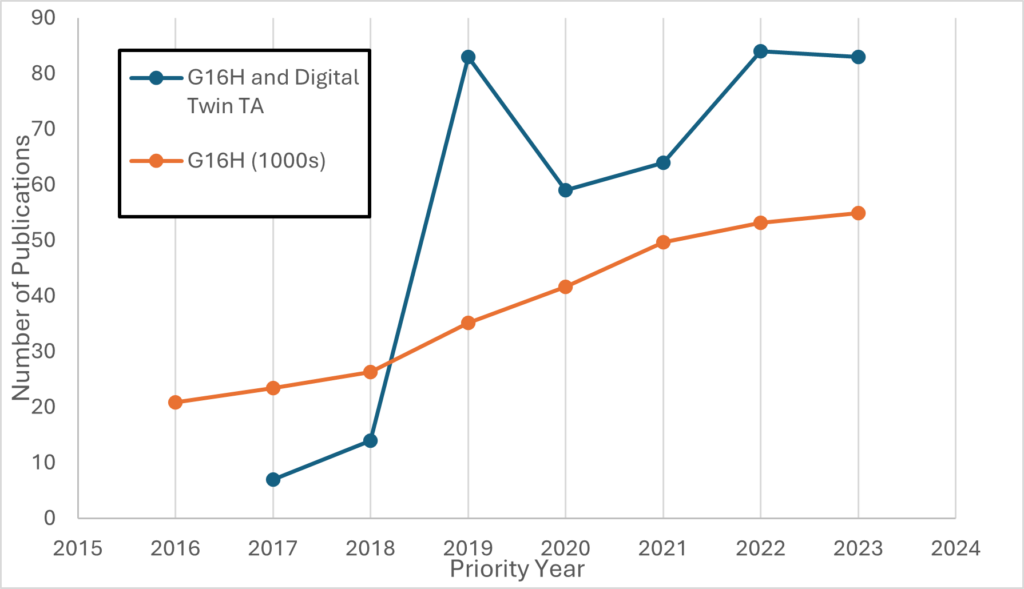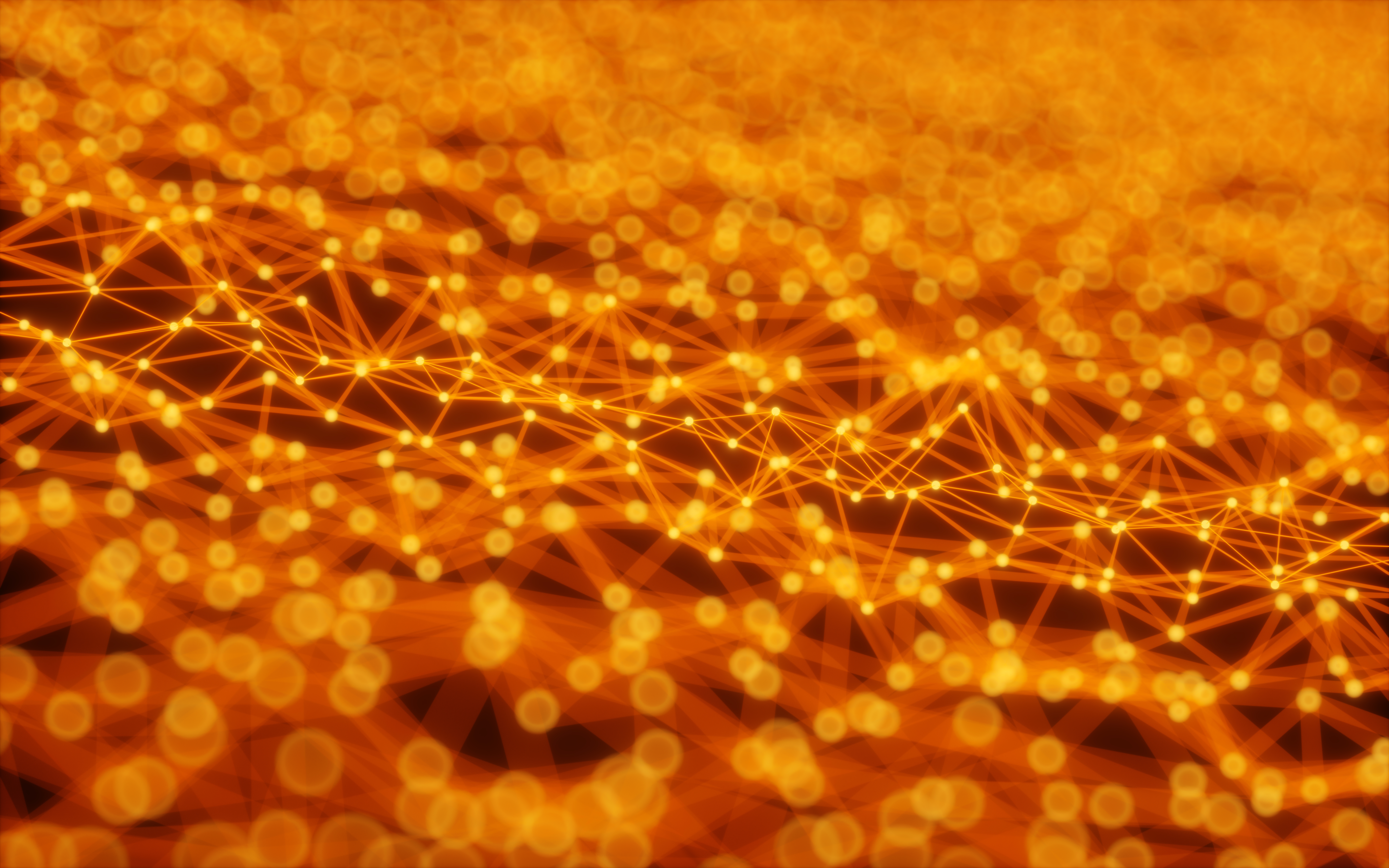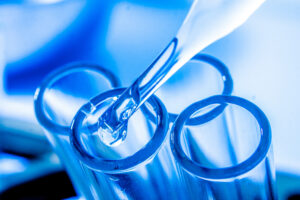06/02/2025
Digital twins provide digital counterparts of real-world systems. They can be used to test, track, simulate (and much more) the physical systems they replicate for the purposes of understanding certain behaviours and predicting certain outcomes. It is not hard to see how the medical industry could implement this technology, and no surprise that there have already been substantial efforts to do so.
This article explores how healthcare has adopted digital twins by analysing patent trends in the space. In particular, we look at which medical and biological systems have been most ‘twinned’, and how these twins have been used to better patient outcomes, as well as looking at the major players in the area.
Methods and Overall Trends
We begin our dive into the topic by looking at overall filing trends for medical digital twins. For the purposes of this study, applications in CPC class G16H (healthcare informatics) containing any reference to ‘digital twins’ were searched for and screened for relevance. The following analysis is based on those results.
Application data showing publication numbers against priority year are presented below. Patent applications publish shortly after 18 months from their priority date. Therefore, the publicly available data only goes up to 2023 and that year is only about half complete.

The data suggest that using digital twins in the medical field is a recent phenomenon. Although filings picked up in 2017, 2019 was a bumper year for this technology. Following a dip in 2020, presumably due to the COVID-19 pandemic, there has been a further uptick in filings ever since. As explained above, as the 2023 data is only about half complete, the full year figure is likely to increase greatly as applications first filed in the latter half of the year are published. Although still a relatively small sector, the patent data show that this field is growing quickly, especially compared to a background of total filings in the G16H CPC class.
Where has the Development Been?
The data become more illuminative when filings are categorised based on the system being ‘twinned,’ and how the twin is being used. To do this, each application was qualitatively assessed based on its abstract and independent claims, before being categorised according to the system being twinned and the use of the twin. The following categories are used:
For the system:
- Non-specific (e.g. holistic models of patients and applications relating to generic organ systems)
- Specific (applications relating to specific biological systems, e.g. cardiovascular, neurological etc.)
- Medical device
- Procedure (applications relating to creating twins of surgical and therapeutic methods)
- Ecosystems (applications to creating twins of large-scale environments, such as hospitals and clinical trials)
And use case:
- Prediction (includes predicting medical outcomes to generate recommendations)
- Diagnosis
- Tracking
- Therapeutic (where digital twins are combined with in-situ apparatus for therapeutic effect)
- Optimisation (i.e. creating and optimising digital twin models)
Using these categorisations, the percentage of applications falling within each intersection of categories is tabulated below:
| Non-specific | Specific | Medical Device | Procedure | Ecosystems | |
| Prediction | 17.3 | 22.0 | 0.0 | 6.7 | 4.7 |
| Diagnosis | 3.3 | 1.3 | 0.7 | 0.0 | 0.7 |
| Tracking | 6.0 | 3.3 | 1.3 | 2.0 | 6.7 |
| Therapeutic | 0.7 | 3.3 | 0.0 | 0.0 | 1.3 |
| Optimisation | 10.0 | 4.0 | 1.3 | 0.0 | 3.3 |
The numbers point to some interesting conclusions. As could be expected, there are plenty of use cases based on predicting outcomes for biological systems, both at the patient (non-specific) and specific level. More surprisingly, perhaps, is how digital twins have been used to model medical ‘ecosystems’ and procedures. Examples include generating digital twins to track and monitor medical equipment within a room (CN112002402A), optimising clinical trial designs by generating a digital twin of each participant (WO2024163665A1), and using digital twins of surgical equipment to assist medical professionals when conducting procedures (CN115312174A). It is clear to see, then, that digital twins are already having far-reaching consequences.
Who to Watch
Several companies look poised to position themselves as major players in this field, with patent applications coming in from both established producers of medtech, such as Siemens and Philips, and newcomers with a specific focus on the area. In particular, Twin Health Inc have emerged as significant filer of patent applications for medical digital twins, with the second highest overall number of applications published in their name. Twin Health Inc focuses on prevention of chronic metabolic diseases by leveraging digital twin technology to provide users with a Whole Body Digital TwinTM that is fed by data from various pieces of wearable health technology. This illuminative use gives a great insight into the potential power of this technology.
At Reddie & Grose, we have a great team of professionals who work collaboratively across our software and life sciences teams to draft and prosecute patent applications for digital twins for healthcare solutions.
This article is for general information only. Its content is not a statement of the law on any subject and does not constitute advice. Please contact Reddie & Grose LLP for advice before taking any action in reliance on it.




